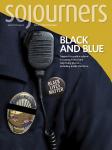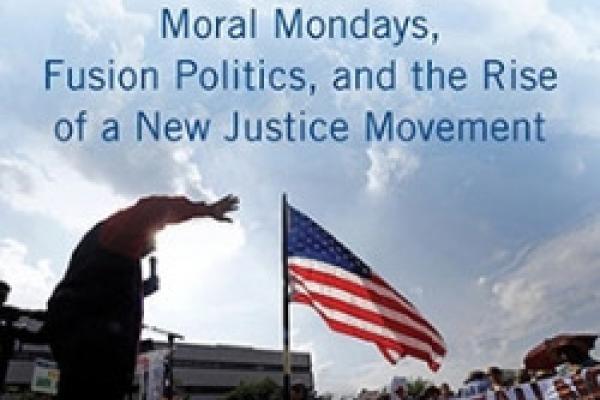DURING A FRACTIOUS election year marked by “how low can you go?” rhetoric, a hopeful word about democracy can be hard to find. When our civil society and citizenry seem evermore splintered by issues of race, immigration, wealth inequality, women’s health, guns, and ideology, who would dare speak with sincerity about finding common cause and increasing enfranchisement?
Rev. William Barber II, for one. In The Third Reconstruction: Moral Mondays, Fusion Politics, and the Rise of a New Justice Movement, he argues that “fusion coalitions rooted in moral dissent have power to transform our world from the grassroots community up.” He believes that people committed to different causes, of different races and faiths and no faith, can come together to advance broader justice and perhaps even revive a democracy that has seen better days.
He believes this because he’s seen it: He helped forge the 2013 “Moral Mondays” protests in North Carolina that brought more than 100,000 people to rallies across the state protesting voting restrictions and corporate-funded extremist legislation, and had sister rallies in several other states. But this wasn’t a spontaneous eruption—the broad-based coalition behind Moral Mondays first formed in 2007 to advocate for expanding voting rights.
In this book Barber, a Disciples of Christ pastor and president of the North Carolina chapter of the NAACP, uses autobiography and U.S. history to root the story—the successes, failures, and wisdom gained—of the work that led to the Moral Mondays campaign and beyond.
As a young pastor, Barber learned valuable lessons when he participated in a failed effort to unionize a textile factory in Martinsville, Va. In the aftermath, he meditated on Psalm 94 (“Who rises up for me against the wicked? Who stands up for me against evildoers?”) and found there the spiritual mandate for sustained moral dissent, even when political victory is out of sight. But he also took an honest look at his strategic failings; a key one was not bringing white pastors and workers into the effort, allowing the white factory owners to divide and conquer the workers along racial lines. His wariness from his own negative experiences with white people had tripped him up. He writes:
Martinsville showed me that Jesus’s insistence that we love our enemies is more than an ethical ideal. In the struggle for human freedom, it is also a practical necessity. If love does not drive out the fears that so easily divide us, we will never gather together in coalitions strong enough to challenge those who benefit from injustice.
Barber has relied on this combination of moral framing and strategic organizing ever since.
While in politics we often focus on the big national elections, Barber describes how our future is being shaped at the state level, not just in elections but in the legislative work that happens in between. Through the American Legislative Exchange Council (ALEC), wealthy individuals and corporations have been funding “‘model legislation’ to remake America from its statehouses up”—slashing public education funding, enacting laws to restrict voting, undercutting environmental protections, and pushing efforts such as the North Carolina “bathroom laws,” along with a host of other measures. Divide, defund, defeat.
In the face of such destructive and well-resourced efforts to divide and conquer, Barber uses the story of coalition building in North Carolina to demonstrate how we can unite and resist. Principles include: Use moral language to discuss public policy, include religious leaders of all faiths, diversify the movement in all ways possible—help those suffering from injustice to not see one another as enemies, acknowledge the centrality of race and the goal of racial equity, recruit scholars who will do the analysis necessary to create strong and effective policies, and focus on voter registration and education—power comes from a diverse electorate that recognizes common interests.
The Third Reconstruction is both inspiring and pragmatic. It encourages readers to claim moral dissent to injustice as a calling—and to marry that calling to practical, local organizing, strategic thinking, and committed bridge-building. It will be a lot of work, but Barber’s confidence in the potential of this kind of movement-building is convincing. His vision of what democracy could look like is a healing tonic to toxic election-year cynicism.

Got something to say about what you're reading? We value your feedback!

